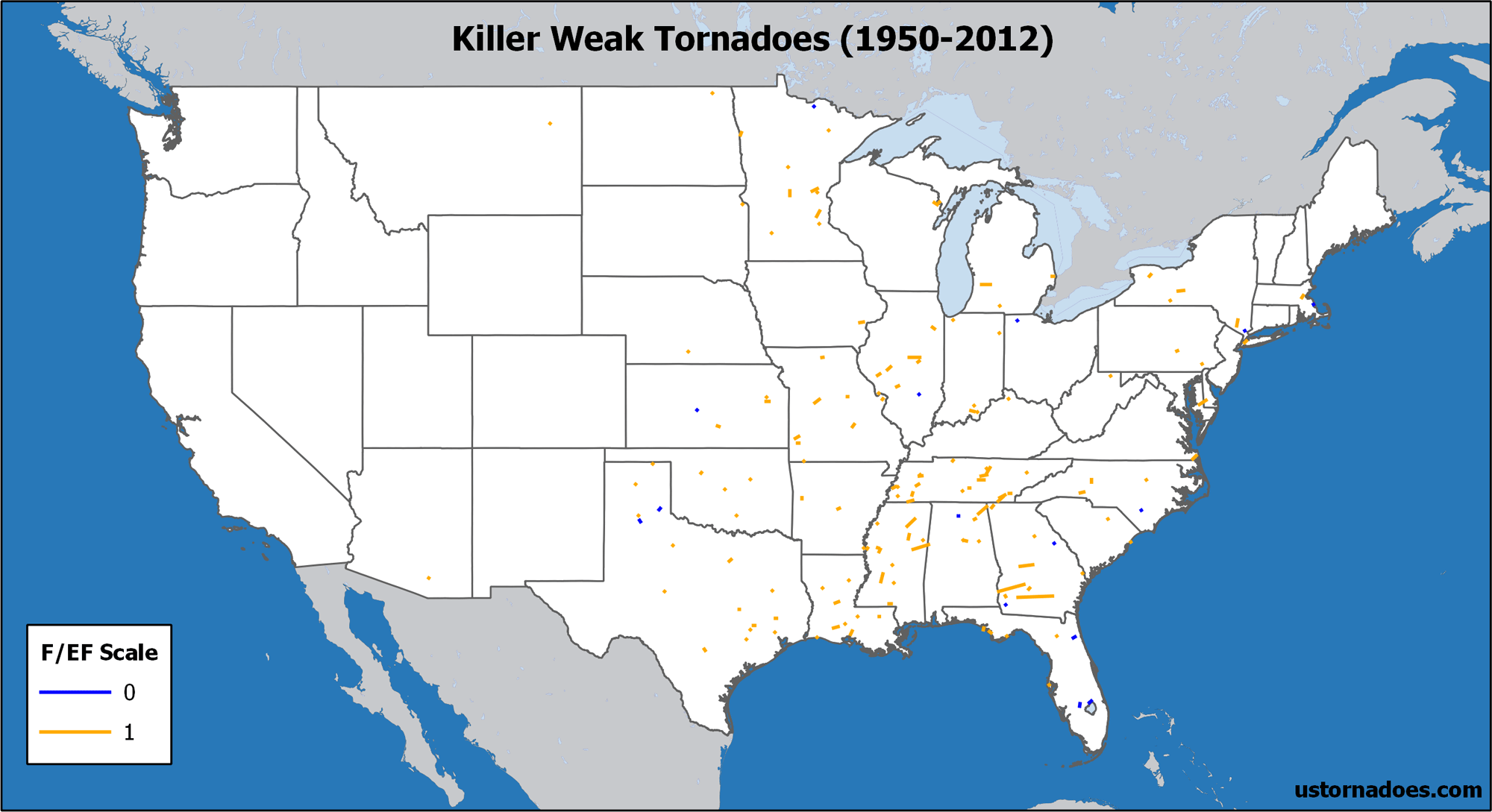
Rightfully, the focus on killer tornadoes is on those which are strong (F/EF2+), and this is because they are responsible for a vast majority of tornado deaths. In fact, strong and violent (F/EF4+) tornadoes are responsible for more than 95 percent of all tornado fatalities.
Despite that fact, the much more numerous weak tornadoes should not be considered safe. In the map above, those tornadoes rated F/EF0 and F/EF1 in strength that caused deaths are highlighted.
There were 169 killer weak tornadoes in total over the span of 1950 through 2012. I’ve omitted unrated tornadoes, which may up the numbers by six in that period if it is assumed they were weak. Additionally, in 2013 (the full tracks are not yet available from SPC) three more weak tornadoes caused fatalities.
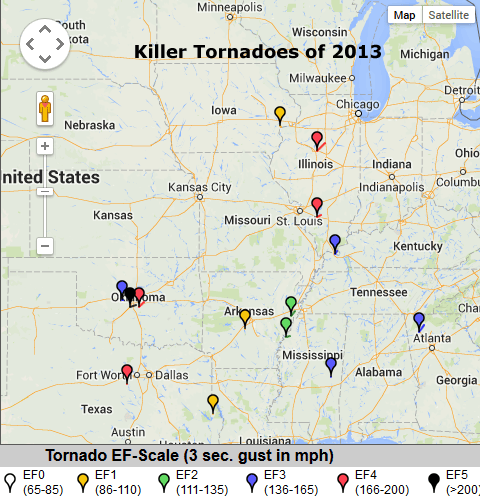
The EF scale defines weak tornadoes as ranging from 65-110 mph on a 3 second gust scale. These are estimates based on damage. Prior to the EF scale being implemented in 2007, the Fujita Scale for F0s and F1s ranged from 40-112 mph.
Before getting into the details, I’ll acknowledge your odds of getting killed by a weak tornado are infinitesimally small. Of the more than 43,000 tornadoes recorded at this strength since 1950, only about 0.4% of them were killers. Most folks never even come across a tornado of any strength in their lifetimes.
That said, you don’t necessarily want to get caught up with one.
A majority of killer weak tornadoes killed one person, but a number have been quite deadly. Here are four (or three, see details) of the deadliest:
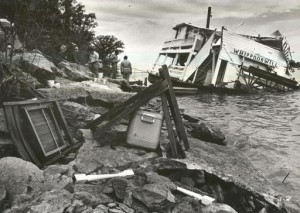
- June 17, 1978 – The deadliest weak tornado on record struck Lake Pomona in Osage County, Kansas. 16 people were killed when an F1 tornado capsized the Whippoorwill Showboat. It’s pretty likely that had this tornado not struck a boat full of people, it would not be known today, as with most weak tornadoes in rural Kansas. Due to the unusual circumstances, it still ranks as one of Kansas’ deadliest tornadoes in the modern record.
- November 16, 1989 – Part of a multi-day outbreak sequence, a rare late-season tornado event occurred across the northeast, including New York state. The tornado database classifies an event which killed 9 school children in East Coldenham Elementary (Orange County, New York) as an F1 tornado. However, Ted Fujita’s survey of the event indicated it was a microburst. While it’s included here, evidence seems to point to it not being a tornado. Strong thunderstorm winds can also be deadly.
- May 26, 1974 – An F1 tornado struck Georgetown County in South Carolina, killing 6 people. Another weak tornado which hit a boat, this time at Murrells Inlet. It also hit several cabins and mobile homes in the area, but all fatalities were associated with the strike on the boat. Note: This tornado is listed as May 19, 1974 in Significant Tornadoes, by Tom Grazulis of The Tornado Project. The information here corresponds to that listing, but the SPC database appears correct on the date given other tornadoes in the area on the 26th.
- March 29, 1991 – During the pre-dawn hours, an F1 tornado struck Mumford, Alabama in Talladega County. The tornado only briefly touched down — scouring the ground for about a mile — but in its short life it struck two mobile homes. In one residence it killed four people. In another, one person died. This was the deadliest tornado in Alabama during 1991.
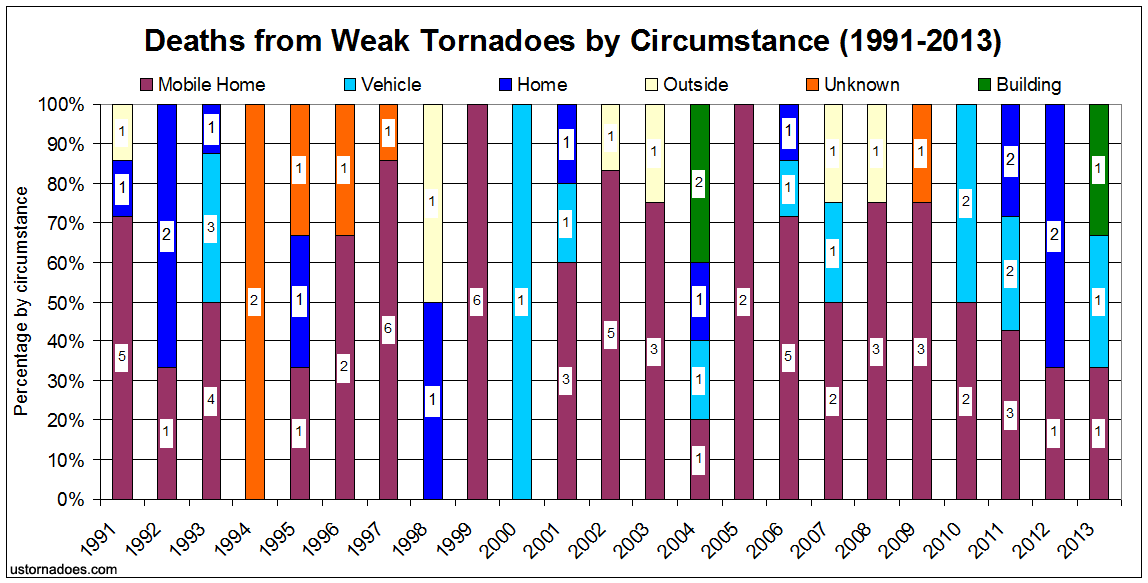
As seen in the short list above, as well as the graphic covering the past two decades, the deadliest weak tornadoes tend to strike those who are not in well constructed buildings. Examining the period since 1991, when stats are readily available through the Storm Prediction Center, one finds that a the lion-share of weak tornado deaths occured in mobile homes, a vehicle, or outside.
Mobile homes are particularly dangerous in all types of tornadoes due to the fact that many are not properly secured to a foundation. This makes them easier to lift and destroy even in lower end wind events. The relatively weak winds of an F/EF0 or F/EF1 tornado can cause devastation to these types of structures, while it takes winds around F/EF3 to cause similar damage to many other residential homes.
Weak tornadoes have caused deaths in well past half of the U.S. states, but certain areas appear to be more susceptible to killer weak tornadoes. All of the top 5 states are in the Southern U.S. This generally matches up with where tornadoes are common, but may also point to higher density of mobile home dwellings among other reasons. This is not to say mobile homes are a tornado magnet, but again they face greater damage potential from weak tornadoes.
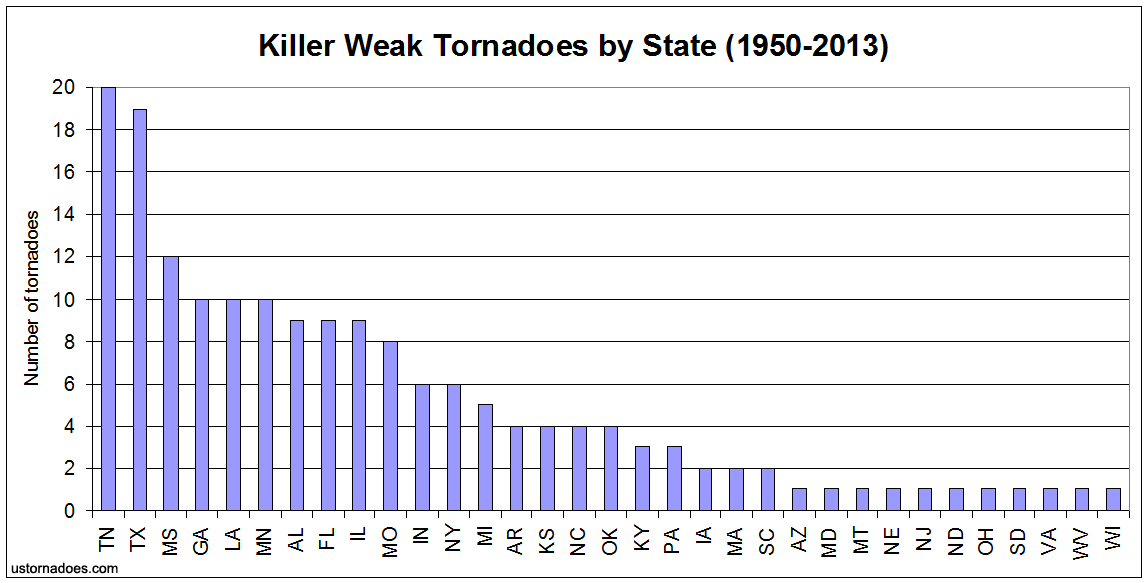
There is also of course a higher population density in much of the South compared to the traditional tornado alley states of the Plains. As with tornadoes of all strengths, the odds of a weak tornado striking unprepared population is arguably greater in the South. There is more to hit and less time to see a tornado coming than in the flat and treeless lands to the west.
While the stats on weak tornadoes do indeed indicate the odds of being killed by one are rather low, there is ample evidence that they should be treated with respect. The last year without a killer weak tornado was 1986. All but a handful of years since 1950 have featured at least one.
If underground shelter is not available, the odds of surviving any tornado greatly increase by putting as much sturdy structure between lives and the wind. This is particularly the case with weak tornadoes, as they are generally quite survivable if the right preparations are taken.
Latest posts by Ian Livingston (see all)
- Top tornado videos of 2023 - January 1, 2024
- March 31, 2023 tornado outbreak videos - March 31, 2023
- Top tornado videos of 2022 - December 31, 2022
Could it be that there is less awareness about the hazards of tornadoes and severe thunderstorms in the South as opposed to the Midwest and Great Plains? If so, that might be why that part of the country is relatively prone to fatalities from severe weather.
That is possible, Joe. though the South is well known for major tornado events. I think a lot of it is population density. Plus I believe on the whole storms/tornadoes tend to move faster there than in the Plains given that big events often happen earlier in the season with a faster flow etc. So, there’s often less time to act — add in lower vis and it can be a problem.
Some years ago there was an article in which the authors evealuated why death tolls in the south were higher than in the north. They examined everything from intendity to time of day ad building construction. The final conclusion was in “coing styles.” While people in the north tended to take action, people in the south said that they believed it was “God’s will”. Wonder if the same is true today?
Sorry – that should be “coping styles.”
Have not heard that before. Interesting idea.
Two notes: Surprised at the cluster in MN. Looks like MO and IL, then a gap with IA and WI, then clustered again in MN. Also, I found the mobile home article you linked to even more interesting! Community of 20k, all mobile homes, in NV… Not a single mobile home residence in DC? DE the most mobile homes per square mile… SC has 18% of residences in mobile homes… Great stats!
Those are interesting points, Jim. The numbers are fairly small to make big assumptions about patterns, though it does seem some spots are more prone than others given the groupings. And, now that I think about it, I don’t think I’ve seen a mobile home in DC.. of course I haven’t been everywhere here!